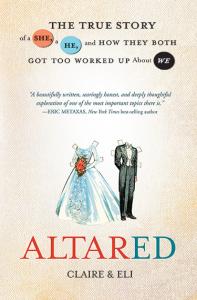Thanks to Jared Burkholder for writing this morning’s guest post on the history of evangelical purity culture. A history professor at Grace College and Seminary, Jared blogs at The Hermeneutic Circle and can be followed on Twitter @jsburkholder.
Those of us who experienced the evangelical youth group subculture of the 1980s and 90s are now in mid-life, and some of my fellow mid-lifers are reflecting back on the “purity movement” that began in those years. The conversation has been led largely by women who are reflecting on the gendered messages to girls within the purity movement. But what about gendered messages to boys?
 For context, see Linda Kay Klein’s new memoir, Pure. Based on a host of interviews, Klein probes the culture of shame and the skewed notions of gender and modesty that have gone along with the movement. Writing as a devout Christian, she describes her struggles with her own “curvy” teenage self and the way women’s bodies were viewed as a threat to male piety. Through their modesty and self-control, women were responsible for keeping the sexual urges of men in check throughout adolescence and dating. Her experiences were shared among those she interviewed. A number also found it difficult to disentangle the shame attached to sexual pleasure after they were married. (For more, see this interview with Klein on NPR’s Fresh Air.)
For context, see Linda Kay Klein’s new memoir, Pure. Based on a host of interviews, Klein probes the culture of shame and the skewed notions of gender and modesty that have gone along with the movement. Writing as a devout Christian, she describes her struggles with her own “curvy” teenage self and the way women’s bodies were viewed as a threat to male piety. Through their modesty and self-control, women were responsible for keeping the sexual urges of men in check throughout adolescence and dating. Her experiences were shared among those she interviewed. A number also found it difficult to disentangle the shame attached to sexual pleasure after they were married. (For more, see this interview with Klein on NPR’s Fresh Air.)
Klein is the latest in a steady stream of female voices critiquing the evangelical purity movement. Similar conversations are happening among women in other church contexts as well.
So what about the boys?
I seem to remember that for all the talk about abstinence, one message came through loud and clear: (delayed) gratification. All the trials of celibate singleness would evaporate into blissful marriage. Wives were receptors for male gratification, after all, and if young men would only wait until marriage, sex would be mind-blowing – what authors Claire and Eli have called “reward sex.”
Now, it was never communicated in those terms, but it was implied by youth pastors and speakers in a myriad of ways. There were the references to the naked Eve being introduced to Adam (which prompted him to exclaim, “Wo-man!”, of course). And Paul’s admonition to secure marriage as a sexual outlet rather than “burn” with lust. Sometimes there were even candid references to Song of Solomon just to prove Christians weren’t the prudes they were made out to be. God was not a “cosmic killjoy.” How could he be? He “created sex.” Trust me, (male) purity gurus preached, it was so good it was “worth waiting for.” As Ted Haggard exclaimed to a reporter, Evangelicals had the “best sex lives” of anyone. (And we know how that turned out.) All of this has left evangelicals debating just how good their sex lives are supposed to be.
Evangelicals who came of age later in the 1990s will remember the talismans of the abstinence movement of that era: purity rings, bracelets, and other paraphernalia. (Which remind me of the temperance pledges in the 19th century.) But for those like me, who went through the youth group culture prior to purity rings, abstinence teaching might be associated with popular evangelical speaker and author, Josh McDowell.
 McDowell’s personal story made for a perfect conversion narrative that assured evangelicals that Christian faith was intellectually superior to other worldviews. As his story goes, McDowell had set out to prove Christianity false and in the process found it so convincing he became a Christian. He went on to sell thousands of copies of popular 1970s “apologetics” books such as More than a Carpenter and Evidence that Demands a Verdict, which were not all that original or intellectually sophisticated. But they were just the ticket for busy youth pastors who could hand them to intellectually anxious kids (like myself) to brush aside their doubts.
McDowell’s personal story made for a perfect conversion narrative that assured evangelicals that Christian faith was intellectually superior to other worldviews. As his story goes, McDowell had set out to prove Christianity false and in the process found it so convincing he became a Christian. He went on to sell thousands of copies of popular 1970s “apologetics” books such as More than a Carpenter and Evidence that Demands a Verdict, which were not all that original or intellectually sophisticated. But they were just the ticket for busy youth pastors who could hand them to intellectually anxious kids (like myself) to brush aside their doubts.
McDowell turned to teaching abstinence around 1987, when he published, Why Wait?: what you need to know about the teen sexuality crisis. Along with this came a book for parents of teenagers called, How to help your child say “no” to sexual pressure. A video series on VHS quickly followed, which youth pastors could show to their youth groups. Then, in 1989, McDowell defied anti-rock preachers and linked up with Petra. The Christian rock band, popular among teenage guys, was at its zenith in these years. McDowell was also featured in a special abstinence-themed album with Petra and other Christian artists as well as a VHS “film essay”. Throughout 1990 and 1991, McDowell joined Petra concerts where he was given the stage to talk about abstinence during a break in song sets. Whether in his videos, or on stage with Petra, McDowell, who turned 50 in 1989, had the persona of a kindly, sweater-wearing father who could blend dad jokes with “straight-talk” about sex organs and venereal disease.
I concede that the “why wait?” message was more holistic than simply delaying gratification. But I suspect most testosterone-driven young men—guilt-ridden from fantasizing and masturbation as they were—fixated on the implied message that sexual hedonism might one-day reward those who could suppress the urge for it in the present. McDowell assured his young audiences that they could look forward to pleasure and “recreational sex” as long as they didn’t screw it up by fornicating. At times, McDowell used imagery from Song of Solomon to link waiting for sex with one day getting “drunk” on sexual pleasure with one’s wife. In marriage, the female body would no longer be a threat to piety, but rather a playground without boundaries.
In a complementarian world where youth pastors and retreat speakers (and most rock bands) were men, it begs the question of gender messaging. Future marital rewards implied that wives were there to provide pleasure for men. As Klein has written, young men were told that although their wives might be lambs during the day, they would turn into tigers at night. Shades of this objectification theology can be seen in Paige Patterson’s comments that teenage boys were simply displaying their God-given and “biblical” urges when they ogled attractive girls, when pastors brag about their “smoking hot wife,” and more recently, in the comments of Mark Driscoll. Even amid evangelical authors with healthier perspectives, good sex is a hot topic — so much so that one wonders if the idea that God rewards abstinence with mind-blowing sex is more prevalent now than in the past.
 So is it any wonder that when young men are taught they can expect divinely-sanctioned indulgence as a reward for their will power and young women are expected to go from innocent lamb to lusty tiger literally overnight, the marriages of middle-aged evangelicals are still recovering from the effects of the purity movement? For the record, I believe abstinence before marriage is best (and marital intimacy ought to be satisfying), but Klein’s book is a reminder for the need to continue critiquing the gendered messaging within the purity movement – not just for young women, but for young men as well. As Claire and Eli have written:
So is it any wonder that when young men are taught they can expect divinely-sanctioned indulgence as a reward for their will power and young women are expected to go from innocent lamb to lusty tiger literally overnight, the marriages of middle-aged evangelicals are still recovering from the effects of the purity movement? For the record, I believe abstinence before marriage is best (and marital intimacy ought to be satisfying), but Klein’s book is a reminder for the need to continue critiquing the gendered messaging within the purity movement – not just for young women, but for young men as well. As Claire and Eli have written:
… if we said, “Deny yourself” instead of “True love waits,” and if we practice setting aside desires rather than just hanging on until we can satisfy them, we might be less surprised and better prepared for the actual challenges of marriage. We might be ready for the wide range of sacrifices marriage requires. A better-rehearsed practice of self-denial and self-control would almost certainly train us to bring more grace and selflessness into all that we do, including marriage.













